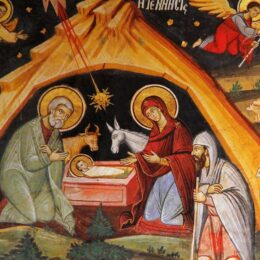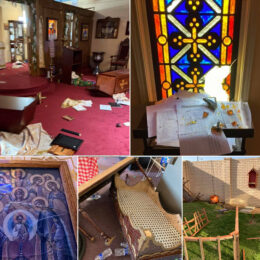New Criterion | Roger Kimball | June 2007
It is now that we begin to encounter the fevered quest for novelty at any price, it is now that we see insincere and superficial cynicism and deliberate conscious bluff; we meet, in a word, the calculated exploitation of this art as a means of destroying all order. The mercenary swindle multiples a hundredfold, as does the deceit of men themselves deceived and the brazen self-portraiture of vileness.
—Hans Sedlmayr, Art in Crisis
Some of what she said was technical, and you would have had to be a welder to appreciate it; the rest was aesthetic or generally philosophical, and to appreciate it you would have had to be an imbecile. —Randall Jarrell, Pictures from an Institution
Last month, a friend telephoned and urged me to travel to Bard College to see “Wrestle,” the inaugural exhibition mounted to celebrate the opening of “CCS Bard Hessel Museum,” a 17,000-square-foot addition to the college art museum. It sounded, my friend said, spectacularly awful. She’d just had a call from her husband, a Bard alum, who had zipped through the exhibition while doing some work at the college. Huge images of body parts—yes, those body parts—floating on the walls of a darkened room, minatory videos of men doing things—yes, those things—to each other, or to themselves, all of it presented in the most pretentious fashion possible. It really was something … special.
Well, these folks are not naïfs. They’ve both been around the avant-garde block and back a few times. If they said an exhibition was ostentatiously horrible, then it was likely to be something worth taking some trouble to avoid—unless, that is, your job description includes regular stints as a cultural pathologist, in which case it is something that duty requires you to inspect, docket, and file away for the instruction and admonition of future generations.
This is my unhappy position. So, one fine May morning I motored up to lovely Annandale-on-Hudson, New York, home of the elite, super-trendy Bard College. Bard is one of those small educational institutions whose ambient wealth has allowed them to substitute avant-garde pretense for scholarly or artistic accomplishment. If your bank account is healthy (tuition and fees for first-year students: $47,730) and young Heather or Dylan is “creative,” i.e., not likely to get into a Harvard or Yale or Williams, then Bard is a place you can send them and still look your neighbor in the eye. The college is probably best known for its baton-wielding president, Leon Botstein, who conducts orchestras in his spare time and whom the music critic Tim Page once described as the sort of chap who gives pseudo-intellectuality a bad name. Bard also has the distinction of being, as far as I know, the only college in the United States to honor the memory of Alger Hiss, the perjurer and Soviet spy, by establishing a chair in his memory.
It had been a long time since I had visited Bard. Back in the early 1990s, I ventured into its sylvan purlieus to write about the opening of the Richard and Marieluise Black Center for Curatorial Studies and Art in Contemporary Culture. Now here we had, attached to the old edifice, the Marieluise Hessel Museum of Art. Two Marieluises? It turned out to be like the evening star and morning star of philosophical lore, Hesperus and Phosphorus: two names but one and the same orb—in short, as William Demarest put it in The Lady Eve, “It’s the same dame.” The German-born businesswoman shed the unfortunate (or maybe not) Mr. Black somewhere along the line. Although married again, she is taking no chances and now endows her endowments with her maiden name. Marieluise has been busy. In the early 1990s, when the Black Center opened, her collection of contemporary art consisted of some 550 items. It has grown to 1,700, of which approximately 200 items are on view in “Wrestle.”
You will not be able to see “Wrestle.” By the time you read this, the exhibition will have closed. But do not pine. You haven’t missed anything. Have I become jaded? Too many close encounters with Gilbert and George, Matthew Barney, and all the other exotic fauna that populate the galleries and art museums these days? Perhaps. In any event, I thought my friends overstated the awfulness of the exhibition. Don’t get me wrong: it was plenty awful. Body parts, “explicit” images, and naughty language galore. The exhibition certainly merited the warning to parents at the entrance. But it wasn’t worse than dozens of other exhibitions I’ve seen, you’ve seen, we’ve all seen.
. . . more



